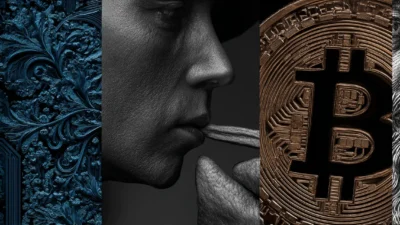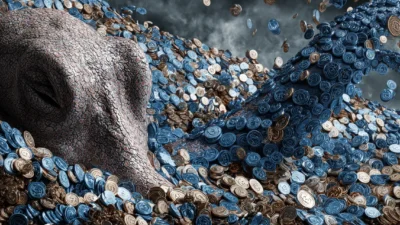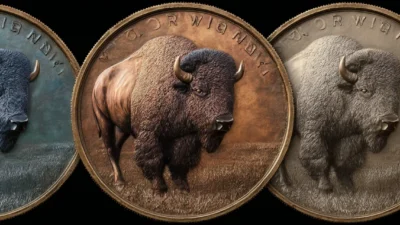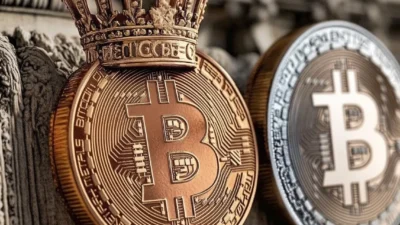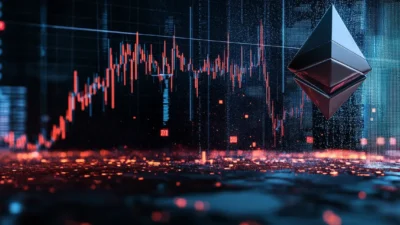TLDR
- The new CPI report is out. (Here’s last month’s article on December’s data.)
- Inflation is running a little hotter than expected.
Inflation just made a comeback, clocking in at levels we haven’t seen since last June. According to the January Consumer Price Index (CPI) report published by the Bureau of Labor Statistics, prices for goods and services in the U.S. rose 0.5% in January.
That bumps the annual inflation rate up to 3%, slightly above expectations. For context, analysts were betting on 0.3% for the month and 2.9% for the year. Not exactly great news if you’ve been trying to stretch your paycheck. What does it all mean? Let’s get after it.
The Numbers That Have Everyone Talking
- Overall Inflation: Consumer prices rose 0.5% month-over-month, resulting in an annual jump to 3%.
- Core Inflation (which excludes food and energy): Up 0.4% for the month and now sitting at a 3.3% annual rate, both higher than forecasts.
- Shelter Costs: A major culprit, contributing to nearly a third of the total price increase, with a 0.4% rise in January.
- Food: Also up 0.4%, including a wild 15.2% surge in egg prices (yep, the bird flu strikes again).
- Energy: Up by 1.1%, driven by a 1.8% rise in gasoline prices.
For anyone keeping track, these numbers are a tad hotter than many economists predicted, confirming that inflation isn’t done with us just yet.
What’s Driving Inflation Higher?
The January CPI report shows that shelter costs remain the heavyweight anchor keeping inflation afloat. Shelter prices rose 0.4% during the month, including a 0.3% increase in rental equivalents, meaning even hypothetical rents on owner-occupied homes were up.
Over the year, shelter costs have risen 4.6%. Blame higher mortgage rates, which have sent potential buyers running toward an ultra-tight rental market.
Food prices also played their part, seeing a jump of 0.4%, mostly thanks to a whopping 15.2% increase in egg prices (thank the lingering avian bird flu for this). Alarmingly, eggs have surged a staggering 53% over the past year.
While fresh veggies like tomatoes and other greens offered a slight reprieve by dropping slightly, most grocery store visits still feel heavier on the wallet.
Energy prices rounded out the trifecta of bad news, climbing by 1.1%. Gasoline prices alone went up 1.8%, and while that may not seem astronomical, it’s enough to leave drivers groaning at the pump once again.
Meanwhile, prices in the used car market rebounded for the first time in months, with a 2.2% monthly increase. Even motor vehicle insurance followed suit, climbing 2% on the month and adding to an annual increase of 11.8%.
What Does This Mean for the Fed?
For a while, many were speculating that the Federal Reserve might cut rates again. Some optimists even hoped for cuts as early as this summer. But this CPI report has effectively put those hopes to bed.
Market pricing data now suggests that the Fed might not lower rates until September at the earliest. Meanwhile, Fed Chair Jerome Powell remains firmly in “don’t-get-your-hopes-up” mode.
Speaking this week, Powell emphasized the need for caution, suggesting that the Fed isn’t eager to pivot policies, even in response to one or two promising inflation numbers that might appear in the coming months.
And What Does It Mean for Crypto Users?
If you’re feeling the squeeze, you’re not alone. The January inflation surge practically nullified recent wage increases.
The Bureau of Labor Statistics noted that the rise in the CPI completely offset the 0.5% increase in average hourly earnings during the same period. Workers may be earning more on paper, but inflation means those dollars don’t stretch as far as they used to.
For crypto enthusiasts, this could have implications as well. Persistent inflation usually puts added pressure on traditional finance systems, which can, in turn, drive interest in decentralized and deflation-resistant assets like Bitcoin.
However, with the Fed holding off on rate cuts in the near term, risky assets (including cryptocurrencies) might not see immediate bullish effects. While the markets were a bit red when the data was released, they’ve started to bounce back at the time of this writing.
The Fed’s Next Steps Matter
All eyes are now on what’s next for the Federal Reserve. This freshly elevated inflation data clashes with President Donald Trump’s calls for reduced rates and new tariffs. Just hours before the CPI release, Trump doubled down on social media, urging for lower interest rates and tying them to his trade policies.
But with inflation sticking around longer than expected, lower rates may have to wait. That keeps financial markets in a holding pattern, as traders currently predict only one Fed rate cut before 2025 comes to a close.
Inflationary Pressures: Moving In or AirBnB’ing It?
Who knows. While it’s tough to predict the future (especially with unpredictable factors like global oil prices and geopolitical tensions), the fact that key contributors like shelter and food costs remain stubbornly high suggests inflationary pressures won’t dissipate overnight.
High inflation erodes purchasing power in fiat currencies, highlighting the potential appeal of cryptocurrencies. However, remember to approach investment decisions cautiously, as volatility and regulatory concerns remain in the crypto landscape.
If you’re new to this space, consider taking baby steps into crypto and continuing to educate yourself — starting with articles like this. Thank you for reading, by the way.
Understanding trends like inflation can help you make informed decisions about your crypto portfolio and where to invest your hard-earned money. Well, what’s left after inflation finished eating a hole into your wallet.


